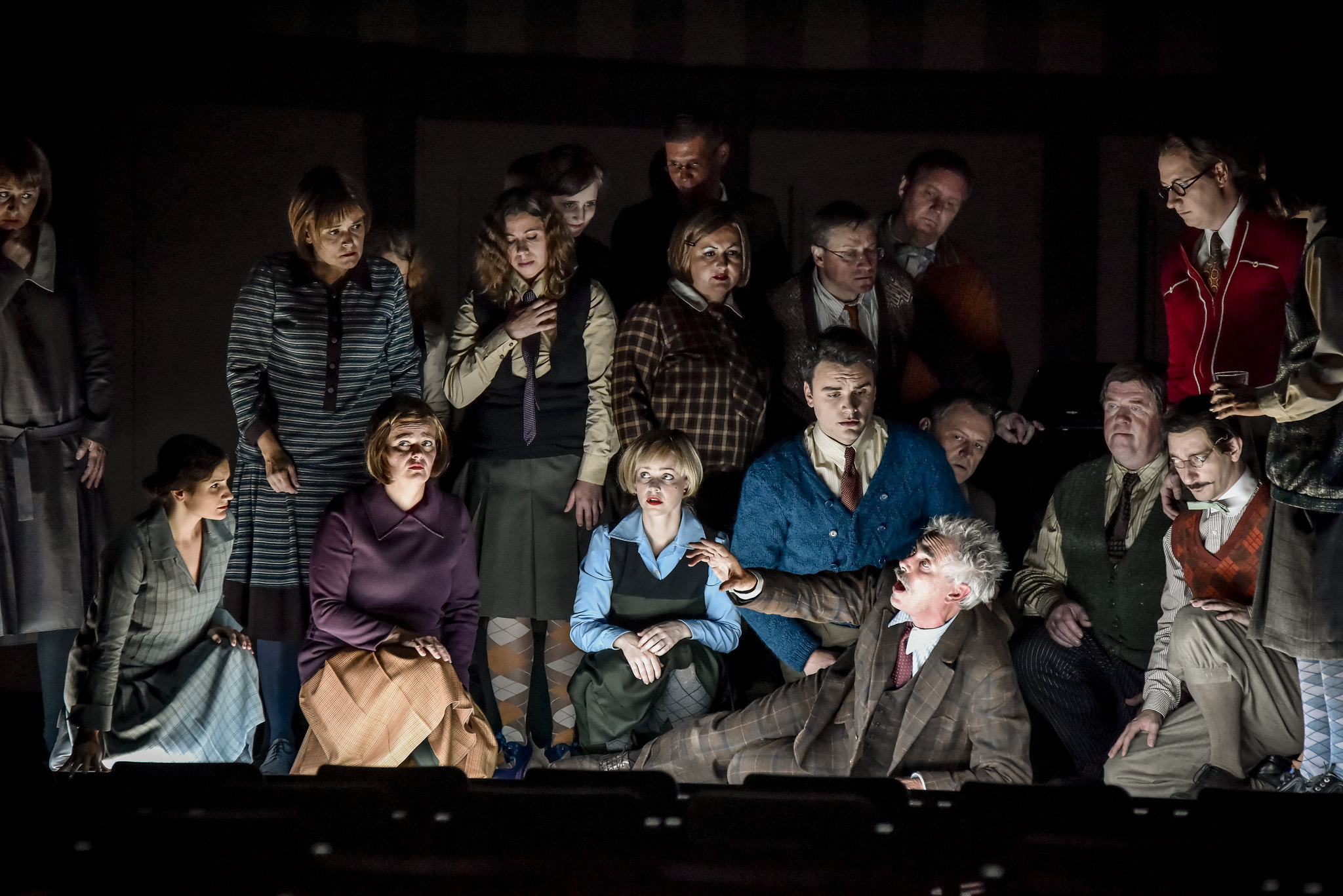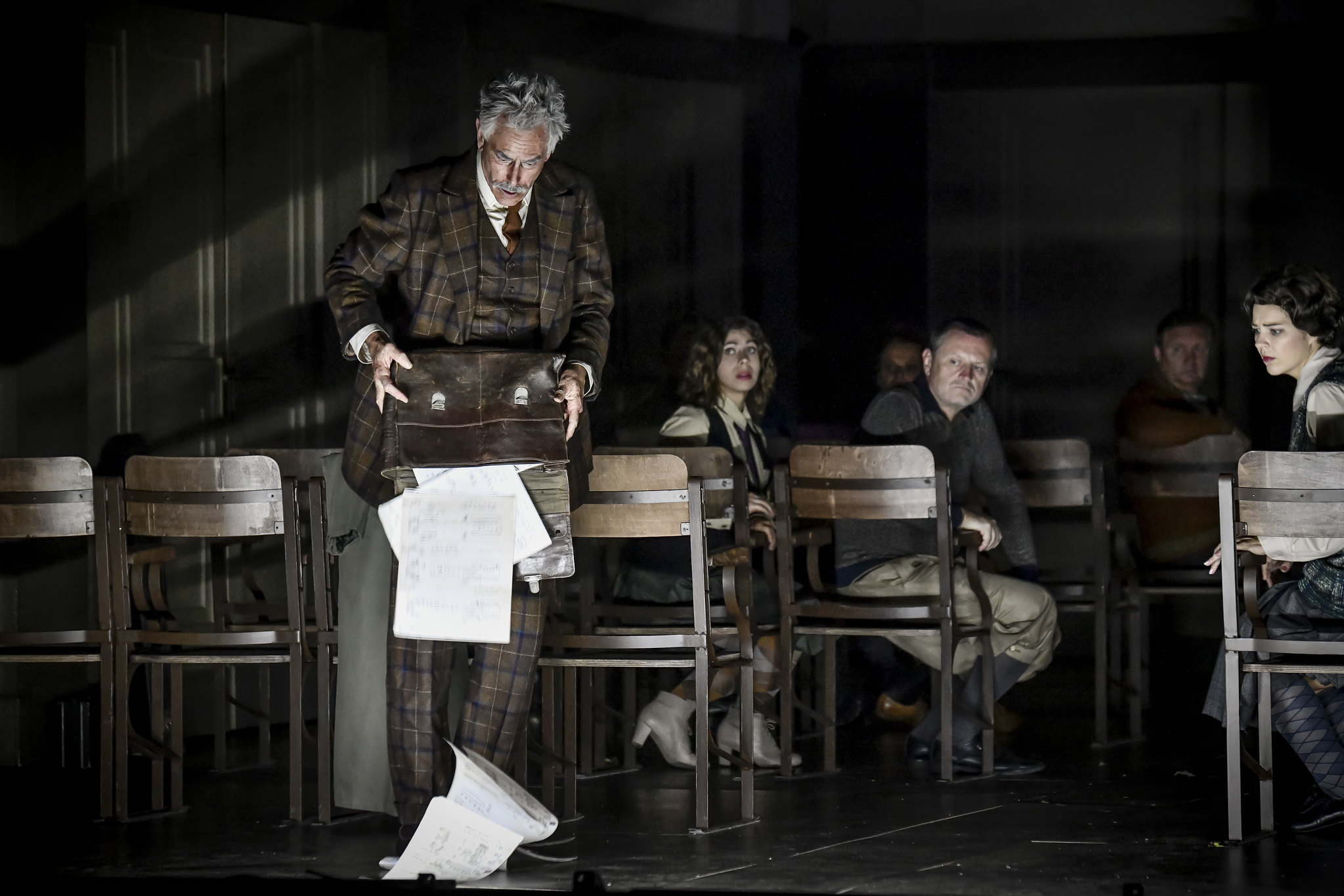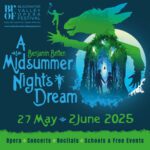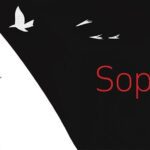Leoš Janáček is Canadian director Robert Carsen’s favourite composer. He admires him especially for his intensely dramatic operatic style. Where other composers become more expansive when they set words to music, Janáček uniquely becomes more concise. It was fitting, then, that Carsen’s first new production in the Czech Republic would be Janáček’s Osud (translated as Destiny or Fate). It premiered at the 2020 Janáček Brno Festival and was remounted there again this year. Czech Television broadcast a live performance on Nov. 27, and a recording of this is freely available for a worldwide audience on the operavision.eu streaming site.
Osud is Janáček’s fourth opera, written in 1903-1905 immediately after the much-better-known Jenůfa. It was a difficult time for the composer as he struggled to cope with the sudden death of his daughter, Olga. The dark work, about a composer writing an opera about a lost love and trying to come to terms with painful memories, clearly has an autobiographical undercurrent.
The piece had an unexpected conception when Janáček met Kamila Urválková in the Moravian spa town of Luhačovice in August 1903. Years earlier, her wealthy parents had put an end to her relationship with the young composer, Ludvik Čelanský, and he, not knowing the reasons for the breakup, had retaliated by writing an opera that cast Kamila as unfaithful (Kamilla, 1897). When she met Janáček, she asked him to write an opera to correct the view, and he, obviously smitten by her to some degree, agreed.
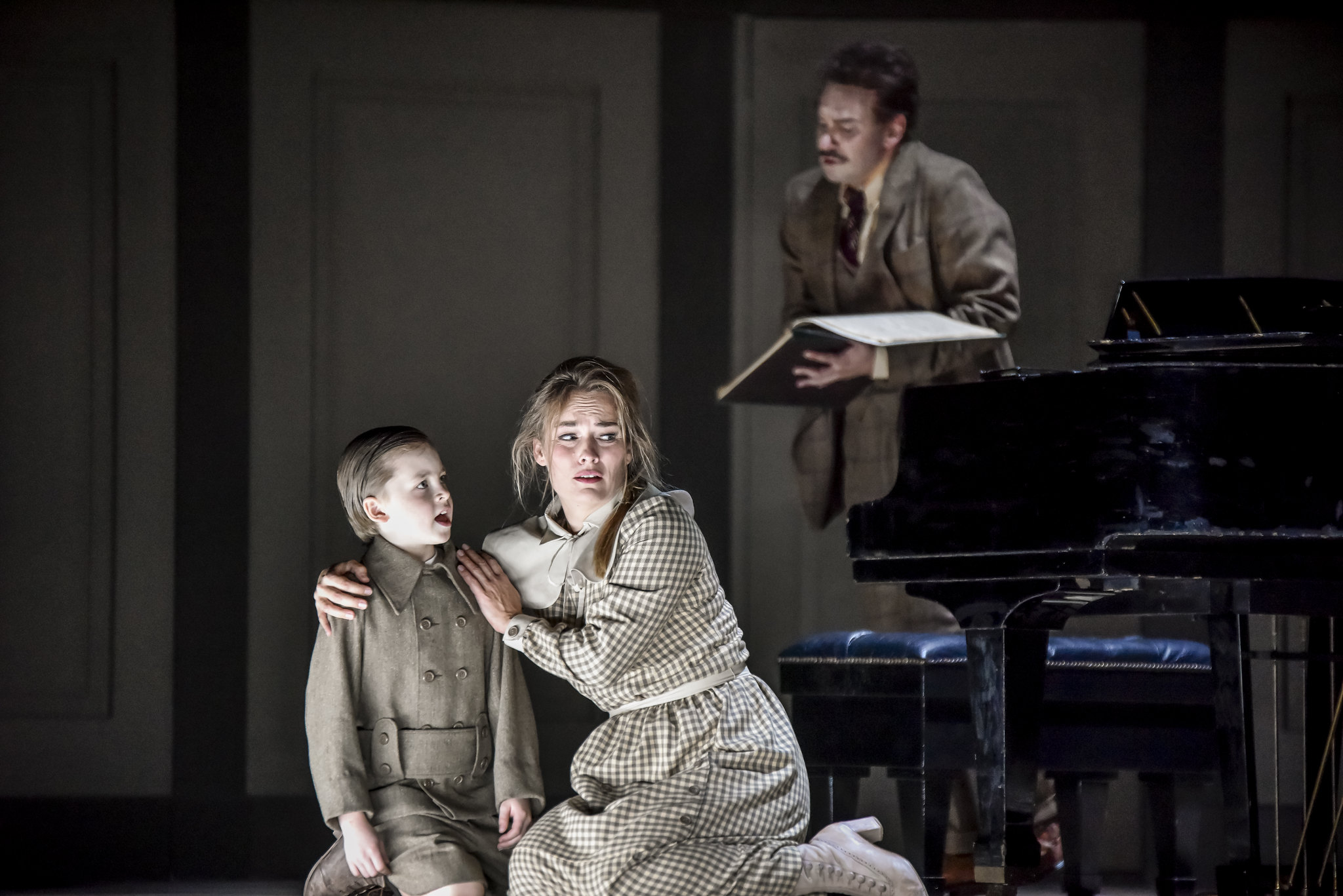
L-R: Petr Hrůša (Doubek), Alžběta Poláčková (Míla Válková), and Enrico Casari (Young Živný) in Janáček Brno Festival’s Osud. Photo: Marek Olbrzymek
He commissioned Fedora Bartašová, a teacher friend of his late daughter, to write a verse libretto modelled on Pushkin (he had recently seen Tchaikovsky’s Eugene Onegin). But then Janáček, too, took a hand in the text and it changed over the course of the opera’s creation. It didn’t help when theatres in Brno and Prague agreed to produce it, each with differing views of how it should go. In the end, after delays and setbacks, Osud was stillborn and Janáček never heard his creation. It was first performed in concert in 1934, six years after the composer’s death, and onstage in a modified version in 1958. Only in 1978 was Osud staged in its original three-act form.
The opera is undeniably problematic. The libretto’s labored construction compromised the end product and the piece is difficult to realize on stage in a comprehensible way. Only the final act is set in the opera’s present; Act I takes place 11 years earlier (and itself deals with prior events), Act II four years earlier. The central character is the composer Živný. Before the opera starts, he has fallen in love with Mila Válková and she is pregnant by him before they are separated by her mother. In Act I, in a spa town, they meet again and escape together. In Act II, we see them living together with their young son and her mentally unstable mother. At the end, the mother jumps off a balcony and drags her daughter with her to her death. In Act III, we see the bereft Živný at the Conservatory on the eve of the premiere of his latest opera, still incomplete. Students puzzle over the identities of the characters in the opera and query Živný. That the piece is autobiographical becomes clear as he tells them about it, but the memories overcome him and he seems to collapse. When the curtain comes down, however, whether the collapse is fatal isn’t clear. Osud, like Živný’s opera, has no clear ending.
While accepting that the libretto is problematic, Carsen views Osud more positively as Janáček’s most experimental opera. The plotline showing characters over a 15-year arc from the past to the present is a theatrical challenge rather than a weakness. And Janáček’s distinctive musical voice, which emerged in Jenůfa, becomes ever clearer in the rich score. Far from a failure, Carsen sees Osud as a progressive step to the mature operas written a decade later.
Carsen’s solution to the time problem in Osud is twofold. Designer Radu Boruzescu’s set for the music conservatory, the “present” in Act III, is used throughout. But with deft changes in costuming style (Annemarie Woods) and especially lighting design (as often, Carsen working with Peter van Praet), the unit set impressionistically transforms to the dreamlike outdoor spa setting of Act I and the indoor apartment of Act II. The visual palette becomes more realistic as we move through time.
The more innovative aspect of the solution was to double cast Živný within this framework. So Italian tenor Enrico Casari sings the Young Živný in Acts I and II, and English tenor Philip Sheffield the Old Živný of Act III. Sheffield, however, is onstage throughout, as if Old Živný is summoning what happened years earlier to transcribe the events into his tragic new opera. The makeup and costuming for the two singers—especially Sheffield’s white hair and moustache—suggestively recall photos of Janáček. It’s an appropriate allusion. In Osud, Janáček wrote an opera about the writing of an opera, and the circumstances in which it came to be are part and parcel of its multi-layered complexity.
Beyond its complex dramaturgy, however, Osud has a direct and often potently dramatic appeal. There are 21 named characters, but Živný, his beloved Mila and her mother carry the bulk of the vocal burden. Here the production is well served by Casari and Sheffield, who are similar enough vocally to make us believe that they are the same character; and in the digital recording anyway, both handle the high-lying role with elan. They are matched by the ardent but troubled Mila of Czech soprano Alžběta Poláčková. There’s a hard edge to Austrian mezzo Natascha Petrinsky’s vocal portrayal of Mila’s mother, though considering she’s an angry woman in Act I and deranged in Act II, her performance is effective. The other major characters are the orchestra, and in Acts I and III, the chorus. The instrumental score and the choral writing (much of Janáček’s output up to Osud was choral) is as colourful as it is dramatic. Both vocal and instrumental forces blend well in the recorded performance under the informed baton of Marko Ivanović, chief conductor of opera at National Theatre Brno.
Compared to Jenůfa and later Janáček operas, Osud has enjoyed very few productions over the past decade, its reputation as a problem piece onstage outweighing considerations of its musical value. This Robert Carsen production calls convincingly for a reassessment, albeit there are points where the production is more Carsen than Janáček. The dream-like approach to Act I, for example, is a big departure from the composer’s attempt to paint a vivid, slice-of-life picture of a summer’s day in a spa town, complete with street band to set the act’s waltz pace. Janáček was apparently inspired by the operatic picture of Parisian everyday life Charpentier tried to summon in his 1900 Louise. (Louise is dubbed a “musical novel” in the score; Janáček’s Osud, “Three novelesque scenes.”)
Carsen, too, changes the ending by cutting the reentry of an Act I character, Dr. Suda, called to aid the collapsed Živný. Suda’s one line—“What is the matter?”—ends the opera. In this production, Živný gets the last word with his line just before Suda’s, where he tells the students that the end of the opera is in God’s hand. Carsen then has him put on his coat and leave the conservatory. The divergent endings are, at least, similarly ambiguous. In the end, however, the strength of the case Carsen’s new production makes for giving Osud a more prominent place in the repertoire far outweighs such changes.
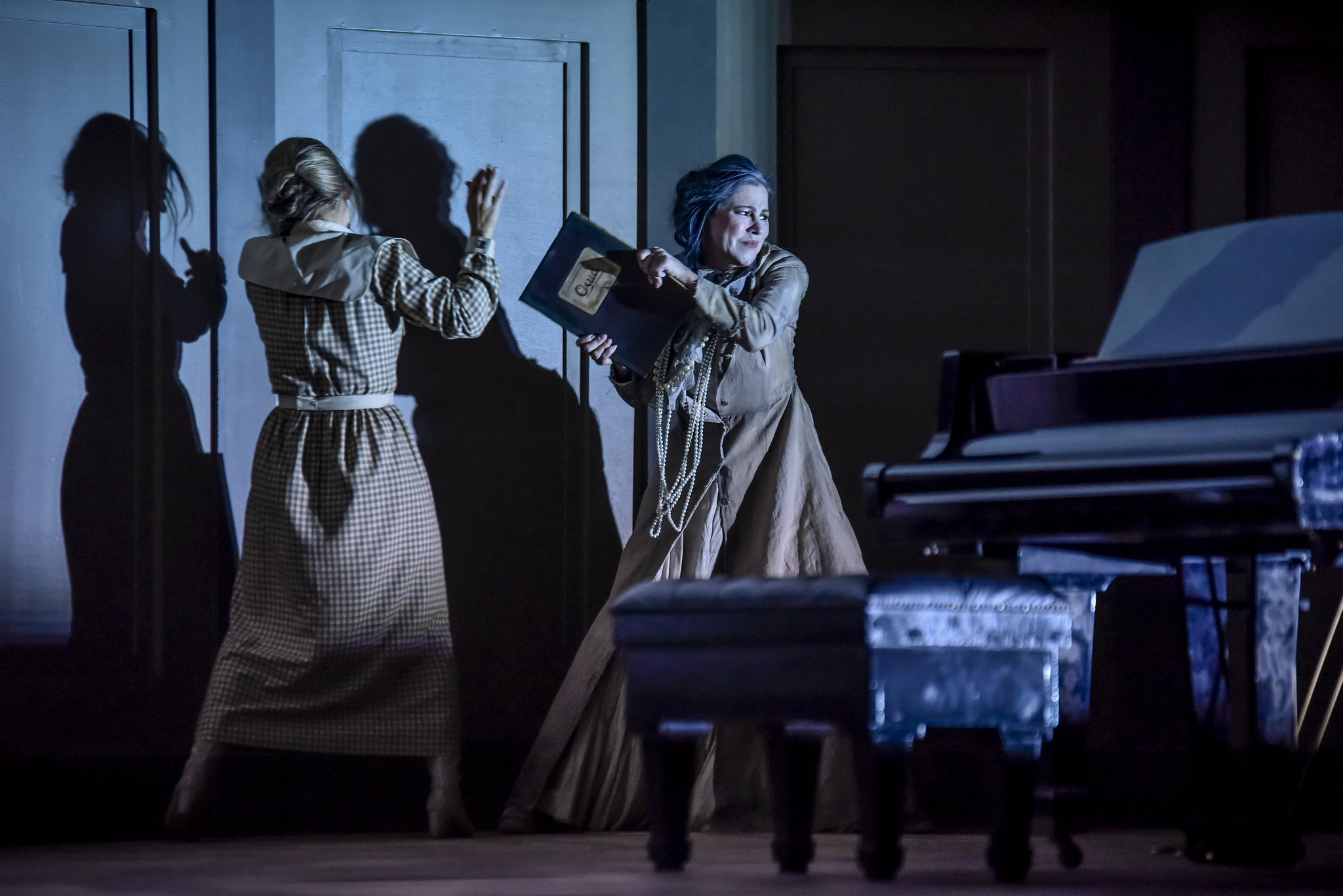
L-R: Alžběta Poláčková (Míla Válková) and Natascha Petrinsky (Míla’s Mother) in Janáček Brno Festival’s Osud. Photo: Marek Olbrzymek
The Janacek Brno Festival production of Osud is available for free on operavision until May 28, 2022.

